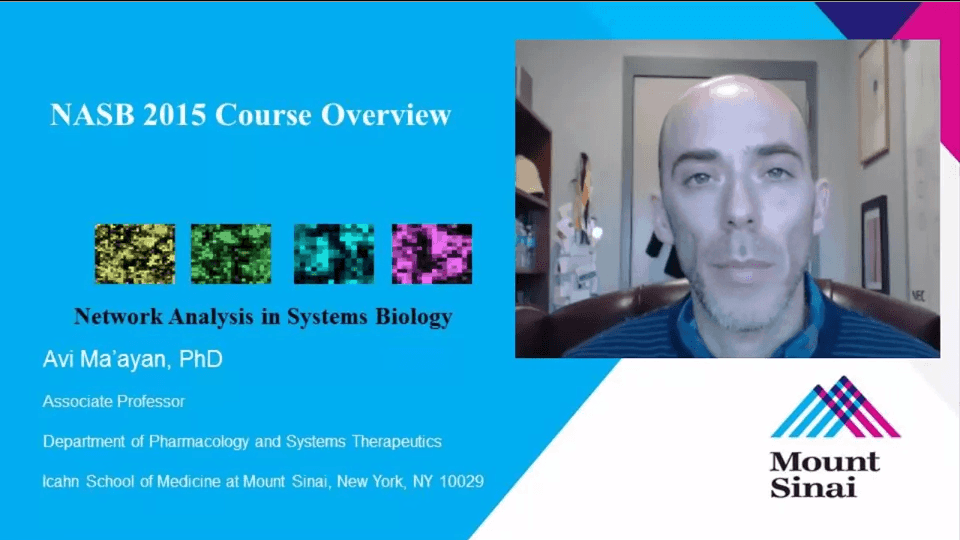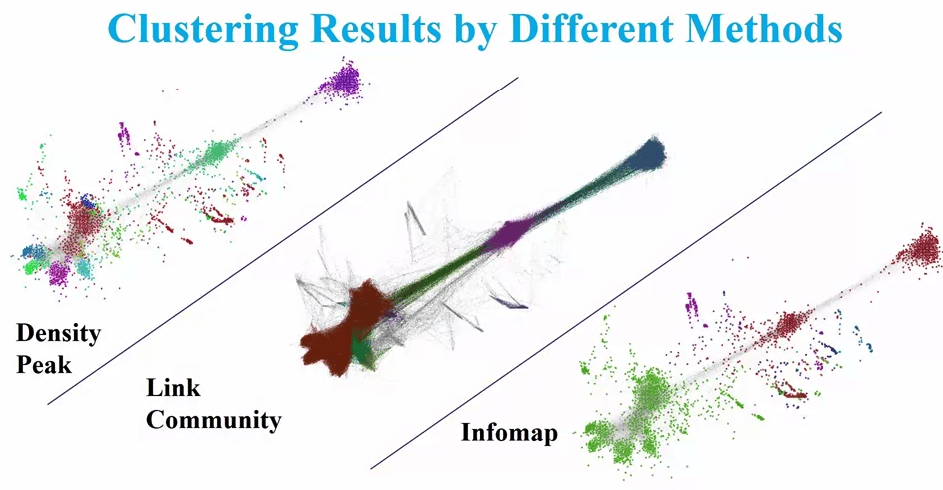Course Review: Network Analysis in Systems Biology Offered by ISMMS on Coursera
Get an introduction to big data analysis in systems biology, bionformatics & more with Dr. Avi Ma’ayan
Review by Adelyne Chan. Took the course? Write your own review here. Read all reviews.
The first line in the course description very effectively summarizes this course in a nutshell: “An introduction to big data analysis in systems biology.” A rapid advancement in sequencing technologies has led to a similarly rapid growth in the field of bioinformatics, where individuals of different fields of expertise – biology, computer science, mathematics – endeavor to put their knowledge together for the development of algorithms, and basically ways, to make sense of all this biological data that is available (often freely, on the web) today.
As a biology undergraduate currently studying a Masters in Bioinformatics and seeking graduate study / career options in the field, I was drawn to this course from its description, which promised a journey of exploring the different tools which could be applied to large data that I hope to work with in the future.
PREREQUISITES
“Basic courses in statistics and molecular biology are useful but not required. Familiarity with environments such as R and MATLAB can be useful but not necessary.”
Having completed the course with some knowledge in statistics, molecular biology and R but none in MATLAB, I tend to feel that some knowledge in at least one of statistics or molecular biology would be important in getting to grips with the course as the lecturers pretty much hit the ground running. There is relatively little explanation of how the data came about, so some understanding of this would certainly help put the analysis in the right context. This is because I felt more comfortable with the topics which I was familiar with the experimental techniques, as opposed to those which I was only vaguely acquainted in the theoretical sense.
The converse way of looking at it would be from a purely mathematical point of view, an approach taken by a fellow course-mate whom I know from my studies. As a trained physicist, he tended to take the mathematical approach and thus effectively ignored how the data came about. We had weekly meetings throughout the duration of the course and it was interesting to note how differently we saw the same material that was being presented!
One of the key goals of this course is to allow the student to go on to process their own data
As for the programming environments, as there was no actual coding required for this course, familiarity with either R or Matlab is really for the curious and is not exactly required to pass this particular course. That being said, one of the key goals of this course is to allow the student to go on to process their own data, and for this it would definitely be necessary to be familiar with some programming, R and Matlab being the 2 key statistical programmes which are typically used in the field.
INSTRUCTOR
As the leader of his group, Dr. Avi Ma’ayan was listed as the sole instructor for this course, however many of the video lectures are actually recorded by members of his team. The course begins with a cute introduction of each of the team members and their research interests, a friendly gesture as I always like knowing what the people who are teaching me are doing in their everyday work. Based on their projects and/or specific expertise, the various team members then appear again during the course of the class through the videos, as well as being very involved in the discussion forum.
The thing I particularly liked about this group of lecturers was that they were a functional lab team in addition to their teaching, with different individuals specializing in slightly different topics and it gave me a bit of a sense of how a typical bioinformatics team would fit together. That being said, this may be of interest to be as I am looking to enter into a career in the field of cancer research so may not be applicable to everyone.
Most of the team members handled the recording of videos extremely well, better than some more established professors of other online courses I’ve taken!
Despite many of them being students in Dr. Ma’ayan’s lab, most of the team members handled the recording of videos extremely well, better than some more established professors of other online courses I’ve taken! Many of them speak relatively slowly (I’m not sure if this was a coincidence or an instruction for the benefit of non-native speakers), and for most of the videos I had to speed them up to get to a speed that I was comfortable with listening to.
THE COURSE
The format of the course was incredibly simple: Videos and quizzes were released on the first day of the class and the quizzes were due on the last day of the course. I remain undecided on whether I prefer it this way or the weekly release, somehow I feel that the latter gives me something to look forward to each week while the former allows me to get ahead of time on weeks where I find myself a little free-r. That being said, although many of the videos do go into quite a bit of detail and provide many helpful references for those interested to go digging further, the quizzes generally only test the broadest understanding and it is therefore not difficult to achieve a passing mark for this course.
There are essentially 2 ways to be successful in this course, depending on how a student defines success. Watching the videos and answering quiz questions is certainly sufficient to pass the course, get a certificate and a basic understanding of systems biology. Depending on the objective of the student this may or may not be sufficient. To really understand the concepts taught, even with a background in molecular biology, I did find that I had to do some reading about the subject, sometimes even outside of the papers recommended.
To really understand the concepts taught, even with a background in molecular biology, I did find that I had to do some reading about the subject, sometimes even outside of the papers recommended.
One area where there could be room for improvement, was the rather drawn-out demonstrations of, say, how to run specific algorithms. These made some of the videos very long, with little to hold interest as all the instructor was essentially doing was clicking buttons on a screen. A better approach might have been to supply some sample data which students could download and follow along as the instructor went through with the analysis, as it is generally difficult to gauge level of understanding by just watching someone else do the stuff. This could be provided as an optional extra to those interested, just the same way crowd-sourcing tasks were provided, so that those who prefer to just sit back and watch can still do so without their grade being affected.
TIME COMMITMENT
The recommended time commitment on the Course Info page was 6-8 hours per week. I’m not sure if the instructors intended for students to follow up on all the references on the slides (this certainly was not a requirement for the quizzes), but the recommended time commitment is very comfortable for getting through the video lectures and possibly taking a glance at one or two of the recommended readings.
WRAP-UP
The number of courses I have completed has recently entered into double digits and I can safely say that this is one of the more useful and well-planned courses that I have taken. There is a lot of material covered, so there is a lot of breadth sometimes in sacrifice of depth, but I think sufficient references are provided to make up for this. I would definitely recommend this course to people of a similar background to mine, as it really brings you up to date with the types of bioinformatics analyses that are being used in the field.
WHAT NEXT?
If you found this course interesting, you may also like Bioinformatic Methods I and II offered by Prof Nicholas Provart from the University of Toronto, which is of a similar nature but with very different objectives. The UoToronto courses are aimed more at getting the students more hands-on with the analysis itself. I’ve also signed up for the follow-up course by the same team at the Icahn School of Medicine, and am looking forward to starting that in September!
[review_widget]
Editors Note: Review by Adelyne Chan. Adelyne is a part-time MSc student studying bioinformatics, part time MOOC addict. She has a first degree in cell biology and is looking forward to beginning her PhD in cancer biology, but finds that her life has been greatly enriched by the variety of MOOCs taken so far. The best part of her MOOC so far has been learning how to programm, as well as interacting with the wider online community.
Class Central is looking for reviewers and regular contributors. If you’ve ever finished a MOOC and want to write a critique to help future students considering taking that course, we want to hear from you. Drop us a mail.







